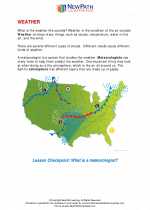Sandy Beaches
Sandy beaches are shorelines that are covered with sand. They are found along coastlines all over the world and are formed by the erosion of rocks and minerals. The sand on these beaches is made up of small particles that have been broken down by the action of waves, wind, and other natural forces over time.
Formation of Sandy Beaches
Several factors contribute to the formation of sandy beaches:
- Wave Action: The constant movement of waves along the shoreline breaks down rocks and minerals into smaller particles, eventually forming sand.
- Wind Erosion: Wind can carry sand particles and deposit them along the coastline, contributing to the formation of sandy beaches.
- Deposition: As waves and currents bring sediments to the shore, they deposit the particles, building up the sandy beach over time.
Characteristics of Sandy Beaches
Sandy beaches have several distinct characteristics, including:
- Soft, Fine Sand: The sand on these beaches is typically fine and feels soft to the touch.
- Gentle Slope: Sandy beaches often have a gradual slope into the water, making them ideal for swimming and recreational activities.
- Biodiversity: Many sandy beaches are home to diverse ecosystems, including various plant and animal species adapted to the sandy environment.
Study Guide
Here are some key points to remember about sandy beaches:
- What are the main factors that contribute to the formation of sandy beaches?
- Describe the characteristics of the sand found on sandy beaches.
- Explain how wave action and wind erosion contribute to the formation of sandy beaches.
- Discuss the biodiversity of sandy beaches and the unique ecosystems they support.
Understanding the formation and characteristics of sandy beaches is important for appreciating the natural beauty and ecological significance of these coastal environments.
.◂Science Worksheets and Study Guides Third Grade. Weather
Study Guide Weather
Weather  Worksheet/Answer key
Worksheet/Answer key Weather
Weather  Worksheet/Answer key
Worksheet/Answer key Weather
Weather  Worksheet/Answer key
Worksheet/Answer key Weather
Weather  Vocabulary/Answer key
Vocabulary/Answer key Weather
Weather  Vocabulary/Answer key
Vocabulary/Answer key Weather
Weather 

 Worksheet/Answer key
Worksheet/Answer key
 Worksheet/Answer key
Worksheet/Answer key
 Worksheet/Answer key
Worksheet/Answer key
 Vocabulary/Answer key
Vocabulary/Answer key
 Vocabulary/Answer key
Vocabulary/Answer key

The resources above cover the following skills:
EARTH AND SPACE SCIENCE (NGSS)
Earth’s Systems
Students who demonstrate understanding can:
Represent data in tables and graphical displays to describe typical weather conditions expected during a particular season.